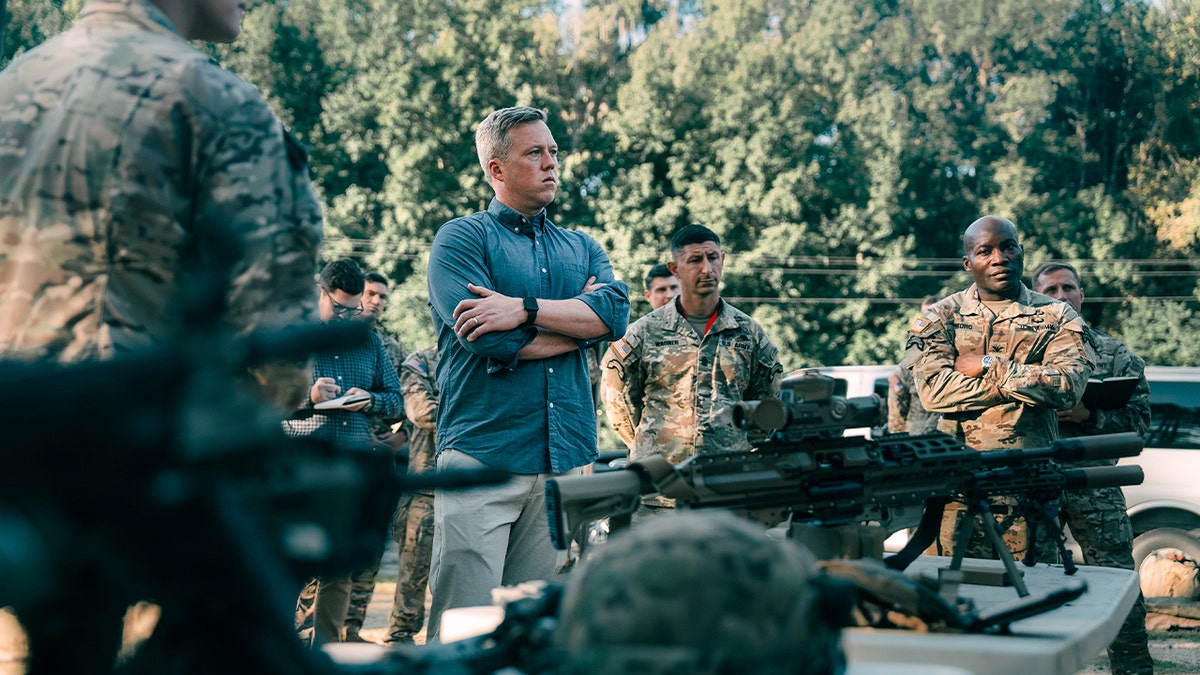NEWYou can now listen to Fox News articles!
EXCLUSIVE: Army Secretary Dan Driscoll said U.S. soldiers are improvising with government credit cards to buy and test battlefield gear as they adapt to the exploding drone threat — as the Army shifts its long-term posture toward countering China in the Indo-Pacific.
In an interview with Fox News Digital, Driscoll described how elite units like the 75th Ranger Regiment are bypassing the Pentagon’s cumbersome procurement system to test new drones, sensors and weapons in real time. At the same time, he said the Army is aligning with the Pentagon’s assessment of China as the nation’s “pacing threat,” building a force optimized for the Indo-Pacific but still capable of deploying worldwide at a moment’s notice.
After a visit with the regiment at Hunter Army Airfield in Savannah, Georgia, on Tuesday, Driscoll said Rangers “basically just use their corporate credit card to go online and purchase things to test, and they will find what works.”
“They’ll do a lot of that outside the traditional procurement process. That flexibility lets them innovate and test at a speed that’s just really hard to do in the conventional force,” he added.
‘THRILLED TO BE HERE’: ARMY SECRETARY SAYS GUARD TROOPS EAGER FOR DC CRIME FIGHT
Driscoll described the 75th Ranger Regiment as “live G.I. Joe dolls.” Watching them train in close-quarters battle, he said, you can’t help but notice their sheer size and physicality as they wedge themselves through doorways during room-clearing drills. That raw power, he added, is a reminder of why the U.S. invests so heavily in maintaining elite infantry forces.
But even America’s premier ground fighters are being forced to rethink how they operate. Driscoll said the age of slipping silently onto an objective under cover of night — fast-roping from a Black Hawk, breaching doors, and overwhelming defenders — is vanishing.
The spread of cheap battlefield technology, from drones to acoustic sensors to loitering munitions, has made stealth insertions far more difficult. “We don’t really own the night like we used to,” he said, noting that night-vision gear and detection tools that were once expensive and rare are now accessible to adversaries at scale.
That shift, he argued, has turned special operators into improvisers. Rangers and other elite units are now experimenting with disposable drones, commercial quadcopters and custom-built weapons to stay ahead.
Unlike conventional forces bound by long acquisition cycles, these units have the flexibility to innovate quickly.
The idea is for Rangers to test rapidly, see what works, and then pass those lessons along to the rest of the Army.
The problem, he acknowledged, is what comes next. While small-unit experimentation is thriving, scaling those solutions across the broader force runs headlong into bureaucratic red tape.
HEGSETH TEARS UP RED TAPE, ORDERS PENTAGON TO BEGIN DRONE SURGE AT TRUMP’S COMMAND

Driscoll pointed out that Congress once gave the Army a dozen broad funding categories it could move money between — say, vehicles in one bucket, drones in another. Today, he said, there are more than 1,400 narrowly drawn “buckets,” some tied to specific makes and models, making it nearly impossible to pivot quickly. That rigidity might not matter for tanks or trucks, but with drone technology evolving every few weeks in Ukraine, he said, the Army risks falling behind.
Driscoll visited the airfield just weeks after a shooting on base at Fort Stewart, where Hunter is located. He met with students of the criminal investigation division (CID), which is currently leading the probe into the shooting. Five soldiers were injured after a sergeant allegedly opened fire with a personal handgun he brought on base.
While he praised the CID’s “speed and professionalism” with the investigation, Driscoll added, “The Army wants zero of these incidents, and so we are looking at everything we can to try to ensure it never happens again.”
Driscoll spoke with Fox News Digital ahead of an expected global force posture review set for late summer or early fall. That review may lead to sizable shifts in the number of troops deployed at bases throughout Europe, the Middle East or the Indo-Pacific.
Driscoll said the Army is aligning itself with the Pentagon’s assessment of China as the nation’s “pacing threat.”
He emphasized that the service is designing its force to be effective in the Indo-Pacific — particularly in providing the logistics, sustainment and long-term presence needed to deter or fight a peer competitor.
At the same time, Driscoll cautioned against focusing too narrowly on one theater. “Human history has been pretty difficult to predict where the next conflict may unfold,” he said, stressing that the Army must remain capable of deploying anywhere the president and defense secretary direct. That flexibility, he argued, is a defining feature of land power.

Driscoll declined to outline his full recommendations for the upcoming review but made clear one priority: counter-drone measures. “With the Secretary of Defense’s support, we are putting together plans to make a pretty aggressive investment in how to counter the threat from drones across the world and here at home,” he told Fox News Digital.
In his tenure, Driscoll has kicked off the Army Transformation Initiative, a top-to-bottom modernization drive he says is essential for the Army to remain decisive against peer adversaries like China.
“If you look at what the Army was like in the late 1990s as it went into the counterinsurgency operations of the early 2000s, we really haven’t changed all that much,” he said.
Now, “the Army is running as fast as it possibly can to try to reinvent itself, to be ready for modern warfare.”
Read the full article here















